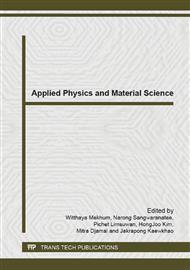p.50
p.54
p.58
p.62
p.66
p.70
p.75
p.79
p.85
Treatment of Wastewater Using Porous Ceramics of Hydroxyapatite
Abstract:
In this work, hydroxyapatite (HA) powder derived from pig bone was prepared by thermal processes. The effect of heat treatment temperatures on crystallinity and microstructure of the HA powder were studied using X-ray diffraction (XRD) and scanning electron microscopy (SEM). The powders are uniaxially compact and then sintering at 900°C-1050°C in air. The microstructural characterization of the porous was carried out by SEM. Filtration studies using the sintered porous HA ceramic were performed for sanitary wastewater. The analysis of raw water sample and filtered water were performed. The results showed that the water permeated through the porous HA ceramics could be cleaner water to meet of environmental standard.
Info:
Periodical:
Pages:
66-69
Citation:
Online since:
June 2014
Authors:
Keywords:
Price:
Сopyright:
© 2014 Trans Tech Publications Ltd. All Rights Reserved
Share:
Citation:


